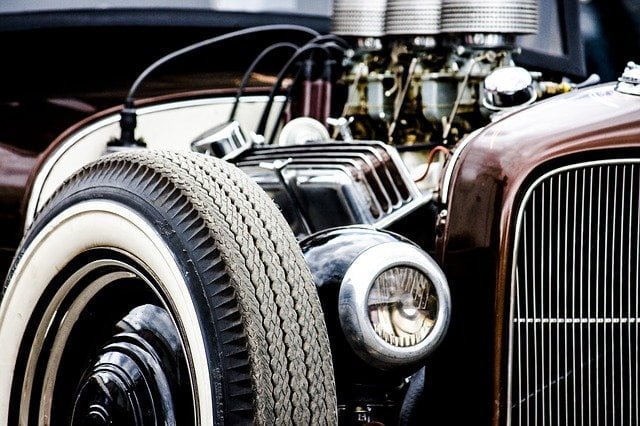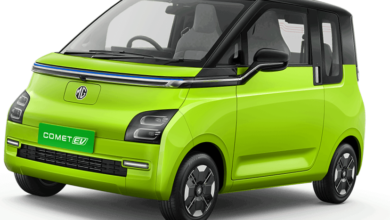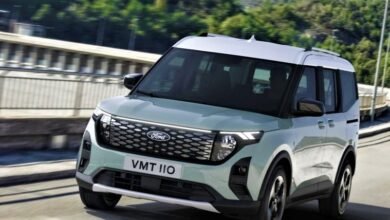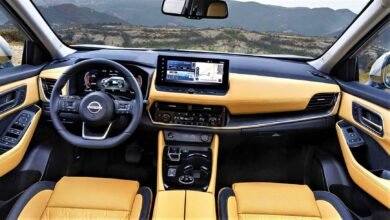
Types of car engines
Types of car engines
When you’re shopping for a car, you come across many different terms that describe various car parts , including the engine. Descriptions such as “V8” and “twin cylinder” can be confusing to the average car buyer. Is one type of engine better than another? When it comes to engine cylinders , is it better to have more? These are reasonable questions to ask before making a purchase decision.
Types of automobile engines are usually described according to two characteristics: the design of the engine and the composition of its cylinders.
In this article, we’ll go through some traditional engine layouts and cylinder configurations . At the end of the article, you should have a good understanding of what separates one type of engine from another!
Engine layouts
Modern combustion engines have similar basic parts. Inside, you’ll find combustion chambers, spark plugs, pistons, and more. However, the way those parts are arranged (“planned”) can vary greatly.
Car manufacturers usually choose one design over another depending on how it fits their vehicle and how they intend the vehicle to perform. Small cars, for example, need an engine that takes up less space.
Here are some standard engine layouts you may have already heard of.
straight drive
In a straight-line engine layout , all cylinders are linearly arranged. The engine is positioned parallel to the length of the car, which means that it travels from the front of the engine compartment to the rear. With this layout, the engine can have more cylinders, which is why you will usually find it in more powerful sedans.
The straight drive design can sometimes be confused with the inline design. Read more below!
inline engine
With the inline engine , the cylinders are arranged in a straight row, just like the straight engine layout. However, it does not go from front to back. Instead, it is perpendicular to the car, which means that it travels from the left of the engine compartment to the right. Some people may describe the rollers as being placed “side by side”.
With this design, the motor can remain small. It frees up more space around the engine for components like the car’s battery and cooling system.
The inline engine design is widely used, especially in family cars and hatchbacks.
flat drive
As the name suggests, this design keeps the engine as flat as possible. Sometimes called a “boxer motor ,” its cylinders are laid flat in both directions. Both sides will have cylinders positioned in such a way that the pistons “puncture” outward. This design keeps the car’s center of gravity low, making it much easier to handle.
V . engine
Neither flat nor straight, the V engine has its cylinders arranged at an angle in a V shape. This option is used to combine the advantages of the above layouts. The V shape allows the car to fit more cylinders but in a smaller space. Having more power in a smaller area makes the V-engine design ideal for high-performance luxury cars.
Engine Cylinder Configurations
Now that we’ve talked about engine layouts, let’s discuss cylinder configurations. This is where we talk about the differences that come with the number of cylinders an engine may have.
Having a different number of cylinders affects the vehicle’s power output and fuel efficiency. For the car enthusiast, this is also important because the cylinder configurations also determine the sound that the car’s engine makes.
Here are some standard engine cylinder configurations.
double cylinders
Let’s start with double cylinder configurations . If you’re wondering, yes, there are only single-cylinder engines. But these are usually found on scooters and motorcycles. In cars, you will usually start with two cylinders up to eight or more cylinders.
As you might imagine, twin-cylinder engines are the smallest of them all, and you’ll find them in very low-powered engines.
three cylinders
Add another cylinder to the configuration, and you’ll have an engine normally found in smaller cars. However, some automakers use this configuration to produce turbocharged versions. This can be seen in cars like the Ford Focus , which have a higher power output than a regular three-cylinder engine while still maintaining excellent fuel efficiency.
four cylinders
This is said to be the most popular configuration on the market these days. Usually, these four cylinders are arranged in an embedded type, which allows them to take up less space. You’ll find this in budget car designs that balance size and power for everyday use.
five cylinders
Engines using a five-cylinder configuration are rare but are well known for their unique sound. Described by some as a “bird” sound, it comes from how the five cylinders fire in an unusual arrangement. Five-cylinder engines can only be found on select makes and models, mostly Audis and Volvos. Do a quick search on YouTube, and you’ll find tons of 5 cylinder engine sounds combinations .
six cylinders
While the five-cylinder configuration is known for its light sound, the six-cylinder is known for its high-pitched, racing-car-like sounds. Usually, you’ll only find these in high-end vehicles. The six cylinders can be arranged in a straight layout, although they are often found in V layouts.
Eight cylinders or more
Notice the pattern yet? The more cylinders, the higher the performance/luxury cars. When you cross into the 8-cylinder area, you’ll only find it in racing cars, supercars, and only the most luxurious sedans.
Tradeoffs
So why does any of this matter to you? Well, if you’re a car enthusiast, you’d probably be more interested in higher power output and a cooler engine. But if you’re a regular car buyer and are looking for a practical vehicle that suits your needs, it pays to see these attributes as a trade-off.
Some engines will provide you with more power than you will need while increasing the cost of the vehicle. You may also end up spending more on fuel in the long run, and the five cylinder noises may annoy your neighbors every time you drive to work every morning!
However, if you’re shopping for a smaller car, it’s helpful to remember that they usually come with smaller engines (ie, fewer cylinders). On the other hand, having too little power is a problem if you’re driving a car full of kids with luggage in the trunk. It’s not fun either.
So, if you’re shopping for a car or when you’re shopping, remember to look deeper than just the make and model. Inspect the engine and make sure it fits your needs. And most importantly, make sure it fits your budget too!
Your working knowledge about engine types will also come in handy when your old car starts showing symptoms of an engine problem. When that happens, be sure to consult a trusted mechanic and only purchase replacements from trusted sources. You can also ask CarPart to search for an engine or any auto part for you



